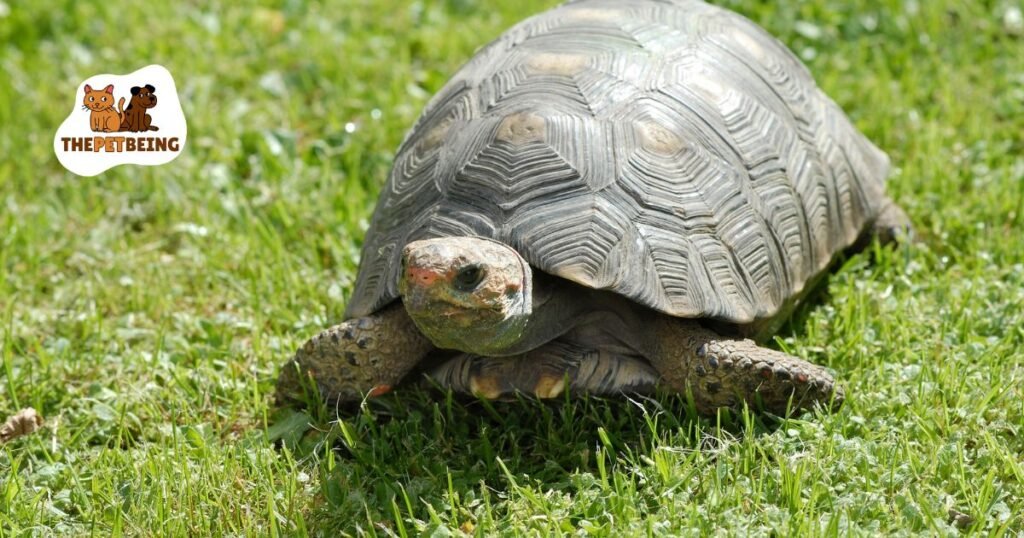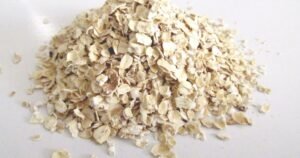How To Take Care Of a Baby Box Turtle? Ensuring proper care for a baby box turtle involves essential steps such as providing a nutritious diet, an appropriate enclosure, and maintaining a moist environment. Do you want to nurture a baby box turtle but don’t know where to start? You can be the perfect box turtle parent and give your little reptile the proper care it needs with some practical advice.
Not only is taking care of great fun, but you’re also learning about animals and their habitats! Here, we have all the tips on taking good care of your new companion so that you two have many happy years together. From understanding its diet and providing a lot of heat for safe hibernation times – read ahead to find out exactly what kind of environment will ensure your baby box turtle stays healthy and vibrant!
Caring for a baby box turtle can be an enriching experience, but caring for such a delicate creature requires thought and effort. The right information is critical to ensuring your pet is well-looked and healthy. If you’re considering bringing one home, here are some tips on providing everything your baby needs to thrive!
Essential Tips for How To Take Care Of a Baby Box Turtle
Turtle care, especially for babies, can be a fulfilling but challenging experience. Here are eight easy-to-follow tips for taking care of a baby box turtle.
Create a Comfortable Habitat
How To Take Care Of a Baby Box Turtle? Start by setting up a comfortable habitat for your baby box turtle. They need a mix of dry and damp areas to mimic their natural environment.
Ensure the enclosure has a shallow water dish for them to soak in and bask, but also provide dry land areas with leaves and logs for hiding.

Provide a Balanced Diet
Offer your baby box turtle a mix of protein, fruits, and veggies to keep them healthy.
You can feed them small insects, such as mealworms and earthworms. For vegetation, strawberries, carrots, and lettuce are good choices.
Remember, fresh water should always be available. Balance is critical in their diet, so vary what you feed them.
Keep Them Hydrated
Baby box turtles need to stay hydrated. Besides having fresh water to drink, they also need regular soaking.
Fill a shallow dish with warm water, ensuring it’s not too deep for your turtle. Place them in the dish and let them soak for 15-20 minutes.
Soaking helps their skin stay moist and aids digestion, too. Do this a few times every week.
Control Temperature and Lighting
Baby box turtles need warmth and light. Keep their home at a temperature between 75-85°F.
They also need UVB light for about 12 hours each day. This helps them absorb calcium and stay healthy.
You can use a particular UVB light bulb for this. Too much heat can be harmful, so monitor the temperature carefully.

Regular Health Check
Make sure to take your baby box turtle for regular check-ups at the doctor. The doctor checks if your turtle is growing right and staying healthy.
They can also help if your turtle gets sick. Remember, a healthy turtle is a happy turtle!
Handle with Care
When you need to hold your baby box turtle, use both hands to pick it up, with one under the shell to support it.
Be careful not to drop or squeeze the turtle. Also, don’t handle it too often, as it can get stressed.
Always wash your hands before and after taking your turtle to keep you and your pet healthy.
Clean the Habitat Regularly
Ensure your baby box turtle‘s habitat stays clean to prevent diseases. This means regularly removing leftover food, cleaning the water dish, and changing the bedding.
Set a routine for cleaning – once a week is a good start. Remember, a clean home is a happy home for your turtle!
Respect Their Sleep
Let your baby box turtle sleep without disturbances. They need plenty of rest to grow and stay healthy.
Their bedding should be comfortable and dark for peaceful sleep. Try not to wake them up, especially during hibernation. Remember, well-rested turtles are lively and happy in the morning!
Caring for a baby box turtle requires time, patience, and commitment, but the rewards are worth it.
Follow these t,ips and your baby box turtle will thrive and grow into a healthy, happy adult.

The Ideal Diet for Your Baby Box Turtle
Feeding your baby box turtle with the right food and following proper feeding practices is crucial for their growth and health.
Here’s a comprehensive guide to help you understand the best diet for your baby box turtle.
A Balanced Diet: The Key to Health
A balanced diet is the cornerstone of health for your baby box turtle. This diet should include a mix of animal and plant-based foods.
Protein can be derived from small insects, while fruits and vegetables provide essential vitamins and minerals.
It’s important to provide a variety of foods to ensure all nutritional needs are met.
Protein Sources: The Building Blocks
Protein is a vitto of your baby box turtle’s diet. They derive protein from insects such as mealworms, earthworms, and crickets.
These insects are rich in protein that aids in growth and development.
Additionally, cooked chicken or turkey can also be included sparingly.
Fruits and Vegetables: For Vital Vitamins and Minerals
Fruits and vegetables form a crucial part of your baby box turtle’s diet. They are rich in vitamins and minerals essential for your turtle’s health.
Fruits such as apples, strawberries, and bananas, as well as vegetables like carrots, bell peppers, and lettuce, can be included in their diet.
Water: The Essential Element
Keeping your baby box turtle hydrated is as important as feeding them. Include a shallow dish filled with fresh water in their habitat.
This serves the dual purpose of providing drinking water and a place for them to soak.
Foods to Avoid
Just like foods that are good for your baby box turtle, some can be harmful.
Foods high in oxalic acid, like spinach and rhubarb, should be avoided. Also, avoid feeding them dairy products as they can’t digest lactose.
Frequency of Feeding
Baby box turtles have a faster metabolism and need to eat more frequently.
Providing them once every day or every other day is usually sufficient. Adjust the feeding frequency and quantity as your turtle grows.
They were identifying and Treating Common Baby Box Turtle Diseases.
How To Take Care Of a Baby Box Turtle? Like any other pet, baby box turtles can suffer from various diseases. Identifying your turtle’s illness early and providing proper treatment is crucial.
This guide will help you understand common diseases, their symptoms, and effective treatments.
Respiratory Infections
Respiratory infections are common in baby box turtles. You may see symptoms like wheezing, mucus from their noses, and loss of appetite.
If you notice these signs, take your turtle to a doctor. The doctor may prescribe antibiotics to treat the infection.
Shell Rot
Shell rot is a fungal or bacterial infection that attacks your turtle’s shell. Signs include soft spots on the shell and foul smell.
If left untreated, it can lead to severe health issues. Treat shell rot by cleaning the infected areas with a mild antiseptic and keep the turtle dry until the shell heals.
Parasites
Parasites can infect your turtle’s digestive system. Symptoms include loss of appetite, weight loss, and lethargy.
A vet can diagnose this through a stool sample and provide deworming medication to treat it.
Vitamin A Deficiency
Vitamin A deficiency can lead to swollen eyes and skin problems in baby box turtles.
To prevent this, ensure a balanced diet rich in vitamin A.
If your turtle shows these symptoms, a doctor can inject vitamin A.
Metabolic Bone Disease
A lack of UV light or poor nutrition can cause metabolic bone disease, resulting in soft shells and deformed bones. To prevent this, provide UV light and a calcium-rich diet.
If your turtle already shows signs, a doctor will likely suggest dietary changes and possibly supplements.
Dehydration
Dehydration can occur if your turtle doesn’t drink enough water. Symptoms include sunken eyes and lethargy.
If you suspect your turtle is dehydrated, soak it in shallow, warm water and ensure it drinks regularly.
Septicemia
Septicemia, a blood infection, can cause loss of appetite, lethargy, and a red tinge to the skin and shell.
This is severe and needs immediate doctor attention. Treatment involves antibiotics and possibly fluid therapy.
Eye Infections
Eye infections in baby box turtles are common and can cause swollen or closed eyes. These may result from unclean habitats or vitamin.
A deficiency. Regular cleaning of your turtle’s home and a balanced diet can prevent these infections.
If your turtle shows these signs, a simple visit to the doctor can provide treatments like eye drops or antibiotics.
Remember, prevention is better than cure. Regular vet check-ups, a balanced diet, a clean habitat, and proper handling can prevent most diseases.
Always consult a vet if you notice any unusual behavior in your turtle. Attention and care can help your baby box turtle lead a healthy, happy life.
Conclusion
How Do You Take Care Of a Baby Box Turtle? Caring for a baby box turtle requires time, patience, and a lot of love. You must provide them with a balanced diet with animal and plant-based foods to keep them healthy and strong. Insects like mealworms and crickets are incredible for protein; fruits and veggies offer vital vitamins and minerals. Ensure to keep them hydrated with fresh water and avoid foods high in oxalic acid or lactose, which they can’t digest.D Remember their habitat, too. It should be clean and comfortable, with enough space for them to move around. Regularly clean their home to prevent diseases caused by uncleanliness. Provide UV light and a calcium-rich diet to prevent metabolic bone disease.
FAQs
How often do you feed a baby box turtle?
Baby box turtles need to eat more frequently due to their faster metabolism. It’s best to provide them once every day or every other day. As they grow, you can adjust the feeding frequency and the amount of food you give them accordingly.
How do I make my box turtle happy?
To make your box turtle happy, provide a clean, spacious habitat, a balanced diet, and regular health check-ups. An ideal habitat includes places for them to hide and a shallow water dish. Give them a diet of both animal and plant-based food. Also, remember to handle them gently and give them time to acclimate to new surroundings.
Do box turtles need light at night?
Box turtles do not need light at night. Constant light can disturb their sleep cycle. They need a natural day-night cycle, with light during the day and darkness at night. It’s essential to mimic their natural environment to keep them healthy and happy.
What should I do if my baby turtle is not eating?
If your baby turtle is not eating, it might be due to stress or an unsuitable environment. Try to change your diet, and offer a variety of food. Make sure its habitat is clean, and the temperature is correct. If it still doesn’t eat, consult a doctor immediately. Remember, baby turtles need to eat regularly for healthy growth.
How many times a day do you feed a turtle?
Baby turtles should be fed once daily due to their fast growth. The feeding amount changes as they grow. They eat plant-based food like fruits and veggies and animal-based food like mealworms and crickets. So, keep their diet balanced. It’s best to consult your vet on the proper feeding schedule.
How do you keep baby turtles healthy?
To keep baby turtles healthy, provide a balanced diet with plenty of vitamins and minerals. Clean their habitat regularly to prevent diseases. Offer them enough space to move and hide. Ensure they get enough light during the day but darkness at night. Take them for regular doctor check-ups for early disease detection. Handle them gently, and always make sure they have fresh water.
















